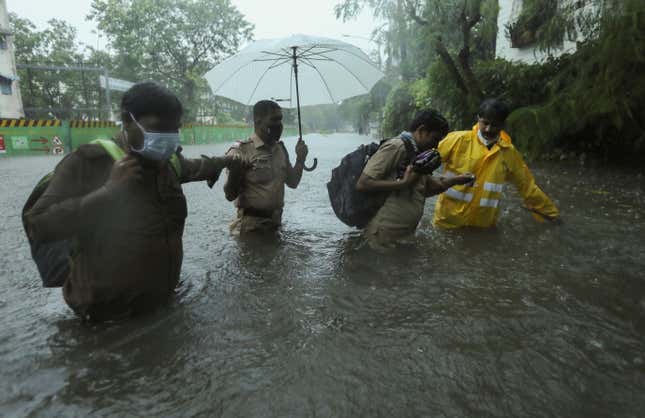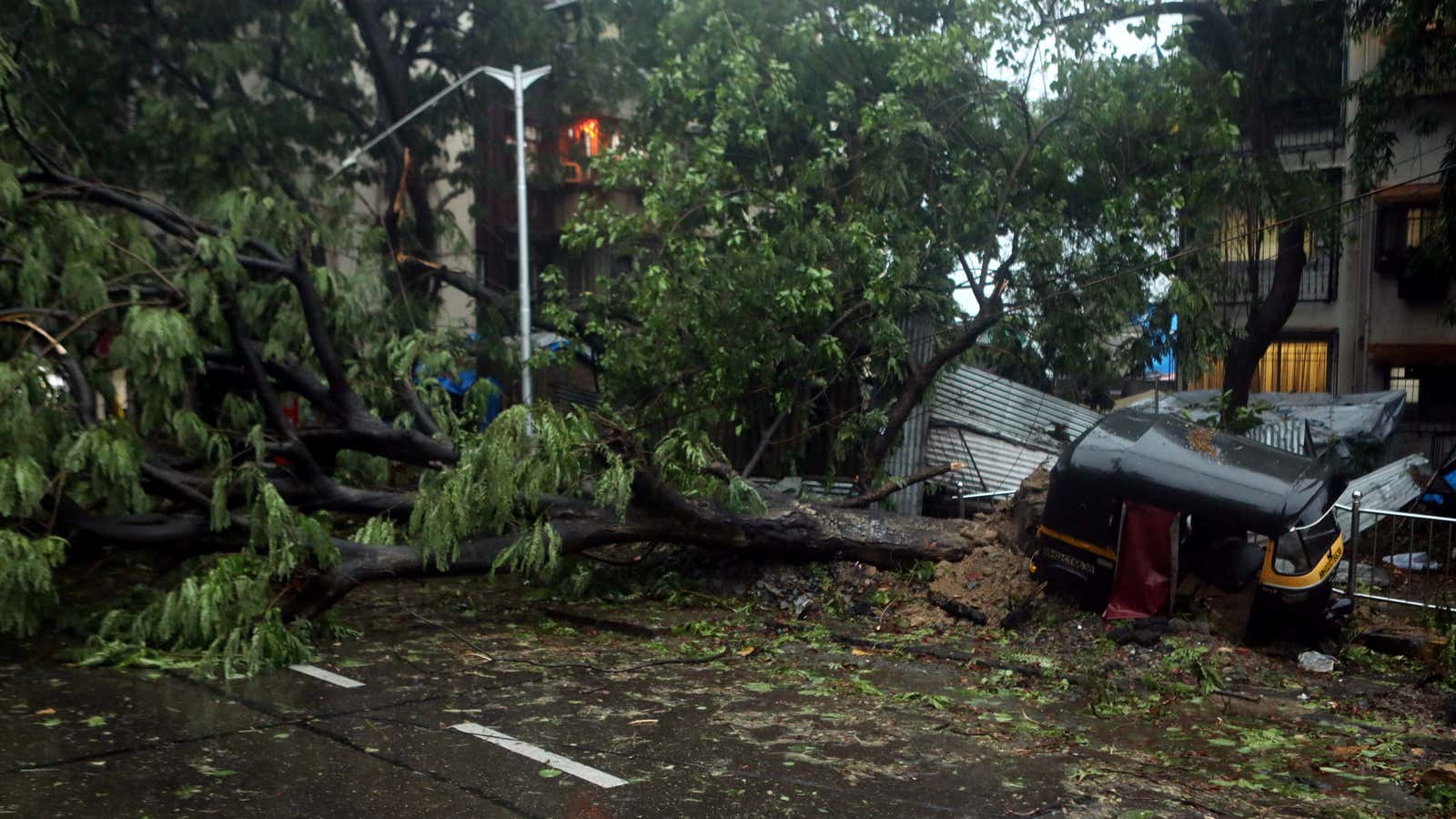Heavy rainfall, thunder, and wind speeds upwards of 100 kilometres per hour have ravaged several western Indian states over the last three days as cyclone Tauktae continues to hit the country. It is the strongest cyclone in the region since the one in 1998, which killed at least 4,000 people.
Over eight people have died in the state of Karnataka where more than 120 villages were hit. Kerala reported seven deaths and over 1,500 homes either partially or fully destroyed, while Goa, where two people were killed, struggled without electricity as 700 electric poles collapsed and up to 300 transformers were damaged.
Six people and four animals were killed in Maharashtra, including two children who were killed by an uprooted tree falling on their hut. Two barges and a drill ship went adrift in Mumbai with a total of 435 people on board. While rescue operations are underway, 125 persons who were on board were still missing at 7.30 am today (May 18).
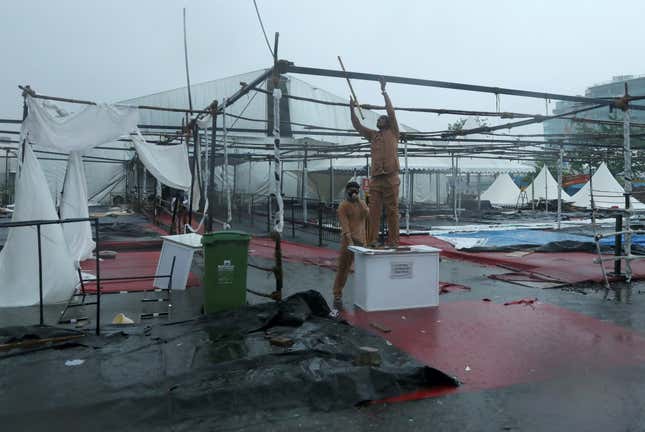
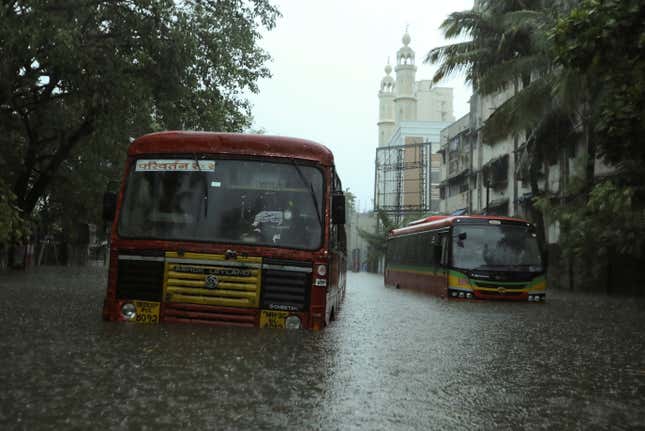
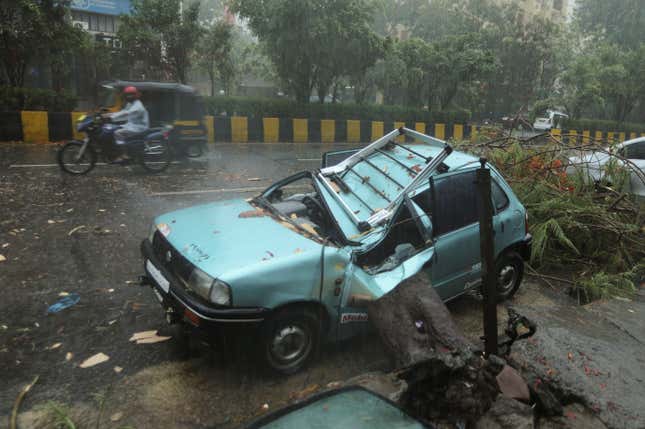
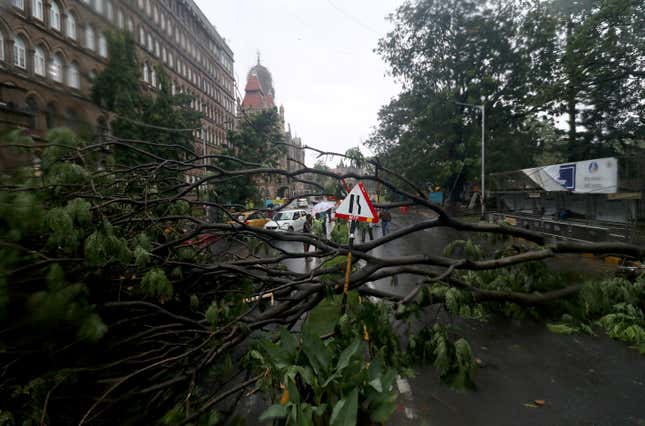
On May 16, the Indian meteorological department’s warnings about Tauktae went from cyclonic storm to severe cyclonic storm to very severe cyclonic storm in a span of just eight hours. A day later, the cyclone was labelled “extremely severe.”
There have been efforts to curb the first cyclonic storm of 2021. Airports in Mumbai, Ahmedabad, Surat, and Vadodara, were shut for parts of May 17 and 18. Hundreds of thousands of people in Gujarat and Maharashtra were evacuated and relocated as the storm approached.
The Indian Army and Navy have been running round-the-clock rescue operations.
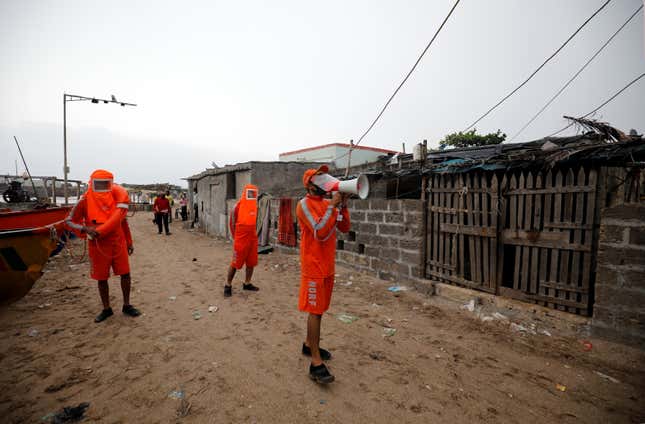
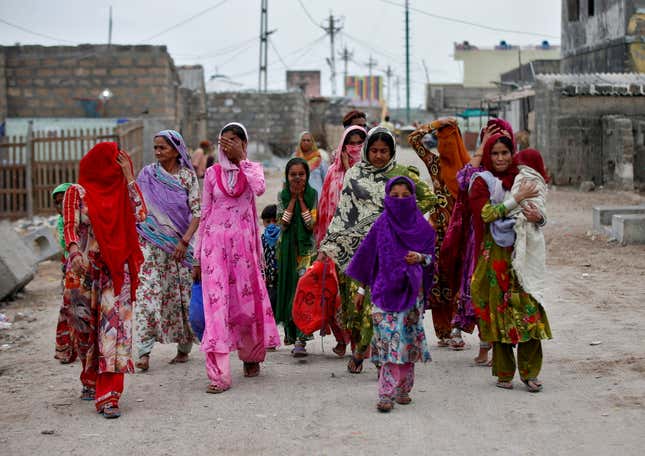
During the worst hours of the storm, local policemen guided people to safety and municipal workers continued clearing out fallen trees from the streets.
